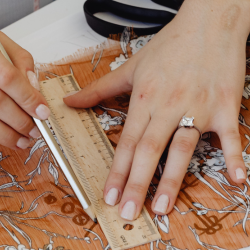Understanding the difference between 2D and 3D animation is essential in the realm of visual storytelling. While 2D animation involves creating characters and scenes in a two-dimensional space, 3D animation adds depth by crafting characters and environments in a three-dimensional world, offering depth and realism.
In this blog, we’ll explore the difference between 2D and 3D animation techniques, uncovering the nuances in their creation processes, and delving into how mastering both realms requires distinct skills and approaches. From learning the fundamentals to mastering the intricacies, discover the key differences and unique elements that set 2D and 3D animation apart. Go through the AAFT online animation course to get a detailed understanding about animation.
Table of content
-
- What is 2D Animation?
- What is 3D Animation?
- 2D Animation vs 3D Animation | Key Differences
- How to Master 2D Animation?
- How to Master 3D Animation?
- Advantages Of 2D Animation
- Disadvantages Of 2D Animation
- Advantages Of 3D Animation
- Disadvantages Of 3D Animation
- Which is better – 2D or 3D animation?
- Should you learn 2D or 3D animation in 2025?
- Conclusion
- FAQs
What is 2D Animation?
2D animation is a traditional animation style that works within a two-dimensional space, meaning it focuses on x and y axes. It involves creating movement by displaying a sequence of images or frames one after another at a rapid pace. Each frame slightly varies from the previous one, producing the illusion of motion. This form of animation typically utilizes characters, backgrounds, and elements drawn or created on a flat surface. It’s commonly found in traditional hand-drawn animations and certain digital animations. The animation process involves drawing or creating individual frames, which are then compiled and played in succession to create the appearance of motion. This classic animation style has been popular in storytelling through cartoons, advertisements, explainer videos, and more for decades.
What is 3D Animation?
3D animation is a technique that creates the illusion of movement in a three-dimensional environment. It involves generating digital images that appear to have depth and realistic qualities, giving the impression of volume and space. Unlike 2D animation, which operates in a two-dimensional space, 3D animation works within a three-dimensional setting, encompassing the x, y, and z axes.
To create 3D animations, artists use specialized software capable of modeling, animating, and rendering scenes. The process involves building virtual objects or characters in a 3D environment, defining their shape, texture, and movement. Animators manipulate these digital assets to achieve lifelike motions, allowing for precise control over elements like lighting, camera angles, and perspectives.
This form of animation is widely employed in various industries, including entertainment (such as films, video games, and television shows), advertising, architectural visualization, scientific simulations, and product design. Its ability to create immersive, detailed, and realistic visuals has made it a powerful tool in visual storytelling and digital media production.
2D Animation vs 3D Animation | Key Differences
Here are some key differences between 2D and 3D animation:
Dimensionality:
-
- 2D Animation: It involves creating movement in a two-dimensional space, working on flat surfaces with width and height. Classic hand-drawn animations, like cartoons, are examples of 2D animation.
- 3D Animation: It exists in a three-dimensional space, incorporating depth in addition to width and height. Characters and objects have volume and can move in multiple directions, creating a more realistic effect.
Technique:
- 2D Animation: Traditionally drawn frame-by-frame or created digitally using software like Adobe Animate, focusing on character design and movement within a flat plane.
- 3D Animation: Utilizes computer-generated imagery (CGI) to create animated scenes, employing 3D modeling, rigging, texturing, and animation tools.
Visual Style:
- 2D Animation: Known for its artistic simplicity and often nostalgic, hand-drawn aesthetic.
- 3D Animation: Offers more complex and realistic visuals, allowing for intricate details, lifelike movements, and dynamic camera angles.
Production Process:
- 2D Animation: Generally quicker to produce due to its simpler nature, often used in short films, commercials, or traditional animation series.
- 3D Animation: Involves a more elaborate process, including modeling, rigging, texturing, animating, and rendering, commonly used in feature films, video games, and visual effects.
Flexibility and Realism:
- 2D Animation: Offers artistic flexibility with a focus on storytelling and stylized visuals but lacks the depth and realism of 3D animation.
- 3D Animation: Provides a higher level of realism, allowing for more dynamic and immersive storytelling, but with a steeper learning curve and longer production times.
Both 2D and 3D animation have their unique strengths, and the choice between them often depends on the project’s requirements, artistic preferences, and desired visual impact.
How to Master 2D Animation?
Mastering 2D animation involves a combination of skills, practice, and understanding of artistic principles. Here are key steps to enhance proficiency:
- Learn the Basics: Start with fundamental drawing skills, focusing on shapes, forms, perspectives, and anatomy. Familiarize yourself with traditional animation principles like squash and stretch, timing, and anticipation.
- Software Proficiency: Acquire knowledge in 2D animation software like Adobe Animate, Toon Boom Harmony, or OpenToonz. Learn the tools, layers, keyframing, and timelines to create animated sequences.
- Study Animation Techniques: Explore various animation techniques such as frame-by-frame animation, cut-out animation, and rigging. Experiment with different styles and understand the workflow for each.
- Practice Regularly: Dedicate time to practice and experiment with animation exercises. Start with simple projects and gradually progress to more complex ones.
- Seek Feedback: Share your work with peers, mentors, or online communities. Constructive feedback helps in identifying areas for improvement and refining your skills.
- Analyze Existing Work: Study animations from professionals or renowned works. Analyze their techniques, styles, and storytelling methods to grasp different approaches.
- Specialize and Experiment: Consider specializing in specific aspects like character animation, motion graphics, or storytelling. Experiment with different mediums, themes, and styles to broaden your expertise.
Remember, mastery in 2D animation comes with dedication, patience, and continuous learning. Explore new ideas, techniques, and tools while building a solid foundation in animation principles.
How to Master 3D Animation?
Mastering 3D animation involves a blend of technical expertise, creativity, and a deep understanding of animation principles. Here’s a guide to enhance your proficiency:
- Learn the Basics: Start with the fundamentals of animation, including principles like timing, spacing, and squash and stretch. Understand 3D modeling, rigging, texturing, and lighting.
- Acquire Software Skills: Familiarize yourself with 3D animation software such as Autodesk Maya, Blender, or Cinema 4D. Learn the interface, tools, and functions for modeling, animating, and rendering.
- Understanding Animation Principles: Apply animation principles in a 3D environment. Study concepts like keyframing, interpolation, and character rigging to create lifelike movements.
- Practice Regularly: Dedicate time to hands-on practice. Start with simple exercises to grasp the software tools and gradually progress to more complex animations.
- Experiment and Specialize: Explore different aspects of 3D animation, including character animation, motion graphics, or visual effects. Focus on areas that align with your interests and strengths.
- Seek Feedback and Learn from Others: Share your work with peers, mentors, or online communities. Embrace constructive criticism to refine your skills and gain new perspectives.
- Study Existing Works: Analyze professional 3D animations to understand techniques, styles, and storytelling. Break down complex animations to learn the process behind their creation.
- Continual Learning: Stay updated with industry trends, tools, and software advancements. Enroll in courses, workshops, or online tutorials to expand your knowledge base.
Mastering 3D animation is an ongoing journey that demands dedication, practice, and an unyielding passion for continual learning. As you delve deeper, explore uncharted territories, experiment with various techniques, and consistently push the boundaries of your creativity. Platforms like AAFT Online offer comprehensive diplomas in 3D animation and visual effects, providing the essential guidance and expertise to embark on this enriching creative path.
Advantages Of 2D Animation
- Cost-effective and quicker to produce.
• Needs not too complicated tools and software.
• Best for cartoons, educational content, and mobile apps.
• Simpler for freshers to learn and bring into practice. - Flexible for stylistic and artistic projects.
Disadvantages Of 2D Animation
- Low on depth and realism.
• Restricted movement and angles.
• Not advised for new generation or modern gaming or virtual reality applications.
• Can feel out of date for industries demanding best experiences.
Advantages Of 3D Animation
- Gives real-life and immersive experiences.
• Allows multiple camera angles and complicated movement.
• Used extensively in gaming, movies, and healthcare simulation.
• Opens lucrative career opportunities. You can explore our 3D Animation Course to build a successful career.
• Flexible for VR, AR, and 360-degree content creation.
Disadvantages Of 3D Animation
- Requires more time, effort, and specialized skills.
• High production cost due to advanced tools and technology.
• The Complex learning curve for beginners.
• Needs strong or powerful hardware and software assistance.
Which is better – 2D or 3D animation?
Several learners ask, what is the difference between 2D and 3D animation, and which one is suggested to pursue? The answer to this question depends totally on your career goals and project requirements.
- If you are looking for simple, low-on-cost, and faster learning, 2D animation is suggested to be a better choice.
- If you want to work on real-life visuals, interactive content, or gaming industries, 3D animation is the suggested choice.
The difference between 2D and 3D animation is important when designing a project framework or selecting an animation field to master.
Should you learn 2D or 3D animation in 2025?
Choosing between 2D and 3D animation in 2025 depends on various factors:
- Project Requirements: Consider the specifics of your project. If you need a more traditional, artistic approach with simpler visuals, 2D animation might suffice. For complex, detailed visuals or realistic movements, 3D animation could be more suitable.
- Production Time and Costs: 2D animation often requires less time and fewer resources than 3D animation. If you have a tight budget or need quicker turnaround times, 2D might be more feasible.
- Desired Visual Impact: Consider the emotional and visual impact you aim to achieve. 3D animation can offer a more immersive, realistic experience, while 2D animation allows for artistic expression and unique storytelling.
Ultimately, the choice should align with your project goals, audience expectations, and available resources. Assessing these factors will help determine whether 2D or 3D animation suits your specific project needs in 2023.
Conclusion
The difference between 2D and 3D animation lies in their dimensional approach. The unique appeal of 2D animation lies in its artistic freedom and nostalgic resonance, while 3D animation offers immersive realism and technical precision. Understanding the key differences between these two forms equips creators to harness their strengths effectively, catering to diverse audience preferences and project requirements in the evolving landscape of animation in 2023.
FAQs
1. Is 2D animation better than 3D?
It depends. 2D is simpler and faster, whereas 3D offers realism and interactivity.
2. Is 3D animation a good career?
Yes, 3D animation is in demand across gaming, films, and simulation industries, offering lucrative career options.
3. Does 3D animation have a future?
Definitely, With VR, AR, and immersive media growing, 3D animation will remain essential.
























